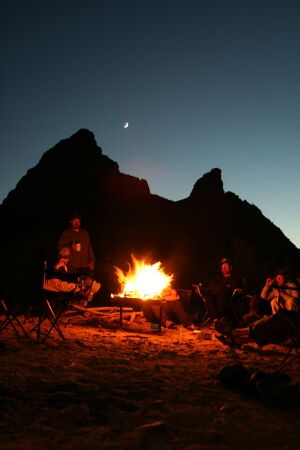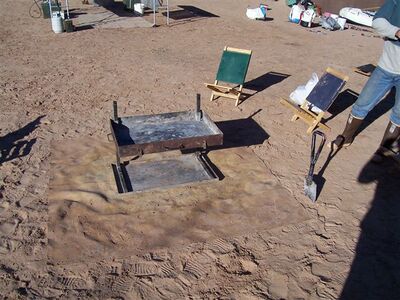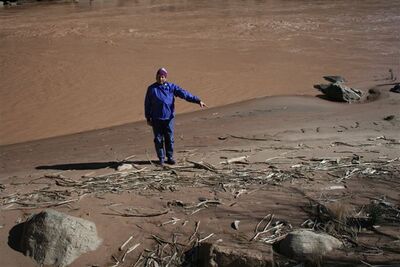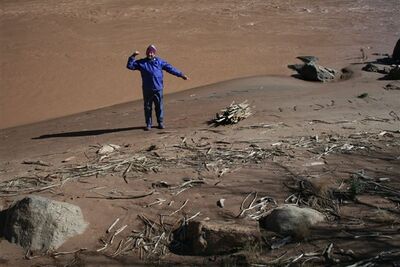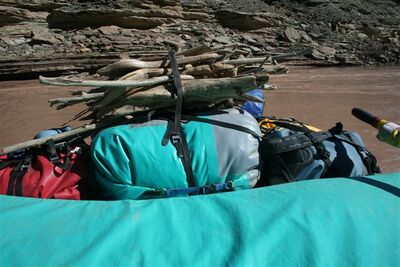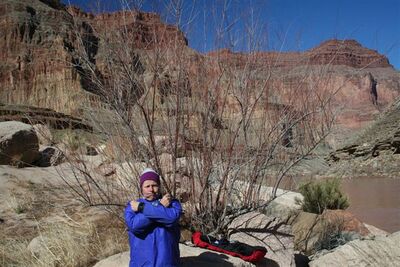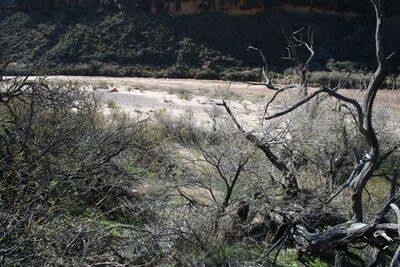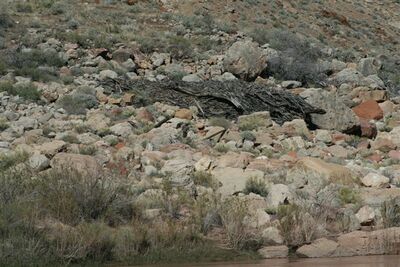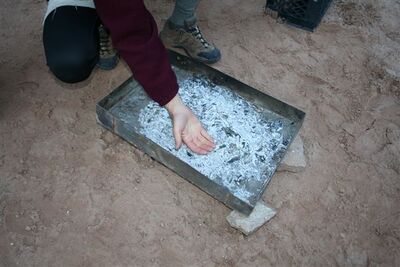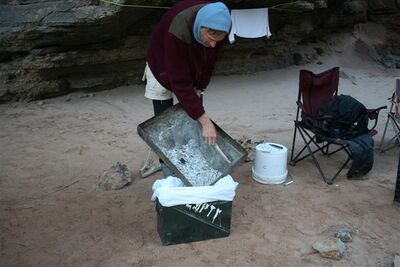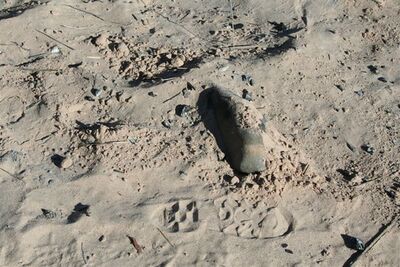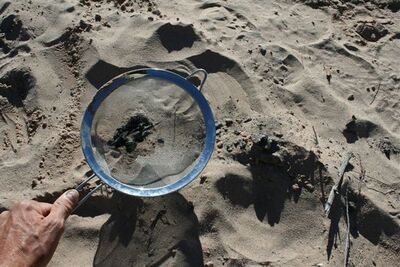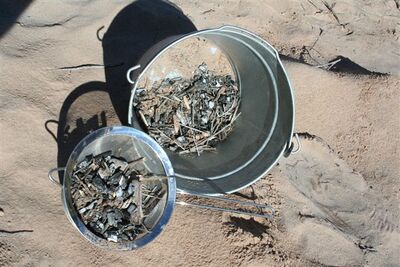Fires
Fires
One of the wonders of camping out in Grand Canyon on a river trip, especially in the cold winter months, is the ability to have a warming fire. Having a warming fire on a river trip is a responsibility not to be undertaken lightly. If we river runners handle our fires appropriately, the Park Service will be able to allow warming fires to continue. How you use fire on your river trip may impact all other river runners in the future, so listen up!
Here are Grand Canyon National Park's regulations for fires on river trips. This information is from http://www.nps.gov/grca/planyourvisit/upload/Noncommercial_River_Trip_Regulations.pdf :
Fires
Gas stoves (propane, white gas, etc…) with sufficient fuel for cooking are required on all trips. Charcoal briquettes may be used for cooking. Wood fires may be used only for warmth or aesthetics. From March 1 through October 31, all wood MUST be carried into the canyon from an outside source. From November 1 through the end of February, driftwood from along beaches may be used for warming and aesthetic fires. Gathering of wood from any standing or on-site fallen trees, dead or alive, is prohibited. All wood fires must be contained in a metal fire pan measuring 300 square inches; the lip of the pan must be 3 inches high on all sides. Fire pans must be elevated using manufactured legs (not rocks, empty cans, etc.). Charcoal briquettes may be contained in fire pans 12 inches x 12 inches x 3 inches. All ash and fire residue must be carried out of the canyon. Trips launching from November 1 through the end of February must carry an approved fire pan. For the rest of the year, fire pans are required only on trips utilizing charcoal or wood fires. Wood or charcoal fires are not allowed outside of the river corridor beaches. Fire blankets are required for use under wood fires and charcoal pans.
Let's take a look at some of the details that are involved in having a wood fire on a river trip.
This photo is of a standard fire pan.
This fire pan stands on metal legs that pack away into the pan when not in use.
There is a heavy canvas tarp under this fire pan. The tarp is required and the legs are recommended. The legs raise the fire so you can dry out wet river gear under the pan. The tarp catches spilled ash and flying embers. A collapsible shovel helps with ash clean up in the morning.
What about firewood? In the summer, March 1 through the end of October, you must bring your own firewood. In the winter, November 1 through the end of February, the regulations allow the collection of driftwood for use in warming and aesthetic fires.
THIS IS DRIFTWOOD.
This is collected driftwood. Easy, huh?
You'll want to float your driftwood to camp, as you can't automatically expect to find ANY driftwood at popular camps, especially during the second half of the winter driftwood burning season.
Any of the vegetation that is growing along the river bank, alive or dead, is NOT driftwood. NOT NOT NOT! Don't be gathering this stuff. Only driftwood by the water's edge is to be burned. Driftwood has nice rounded edges and has been worked by the river.
THIS IS NOT DRIFTWOOD!
Look at this great wood. Guess what. It's NOT driftwood either! Look how far from the water's edge this picture was taken. Got it?
Look at this great wood. It's NOT Driftwood, so... It is NOT firewood!
You may see mats of driftwood from before Glen Canyon Dam or from the high water year of 1984. This is NOT driftwood down by the water's edge. It turns out these old and high mats of driftwood are home to a number of animal species. You may see lizards scurrying around on the beaches and even notice that they hang out around wood piles. Yep, that is their home and is not your firewood. Please don't burn this wood either.
This is NOT driftwood for fires either!
All ash from fires, regardless of the time of the year, is to be packed out of the park. In the morning when you break camp you'll want to put your fire ash in a container. If your ash is cold, it won't set the rest of your trash on fire. You can check it with the back of your hand. If it's still hot, mix it with a little water.
This fire pan was placed on some stones to elevate it off the sand. This avoids baking the sand underneath the pan.
Use caution when emptying your fire pan that you don't spill your ash on the ground. Don't throw any ash in the river. What sinks out of sight re-hydrates and floats onto the next beach downstream. You'll see an ugly black line with chunks and bits of charcoal at the water's edge. It's a mess. Plan on packing out all your ash. It's that simple.
If you encounter a charcoal mess left by other visitors to the park, or you make a mess yourself, please clean up after yourself and others. This photo is of a campfire mess careless visitors left.
The strainer you are required to bring on your river trip is a perfect tool for sifting the sand where your fire was or to clean up the mess left by others.
We cleaned up this much ash after other river travelers left this mess at a location where backpackers seldom go and day hikers never go. It was clearly a river camp. You are a steward when you clean up a mess like this left by others, as when you normally leave a clean camp. Thanks!
Click here to return to The Trip page.
